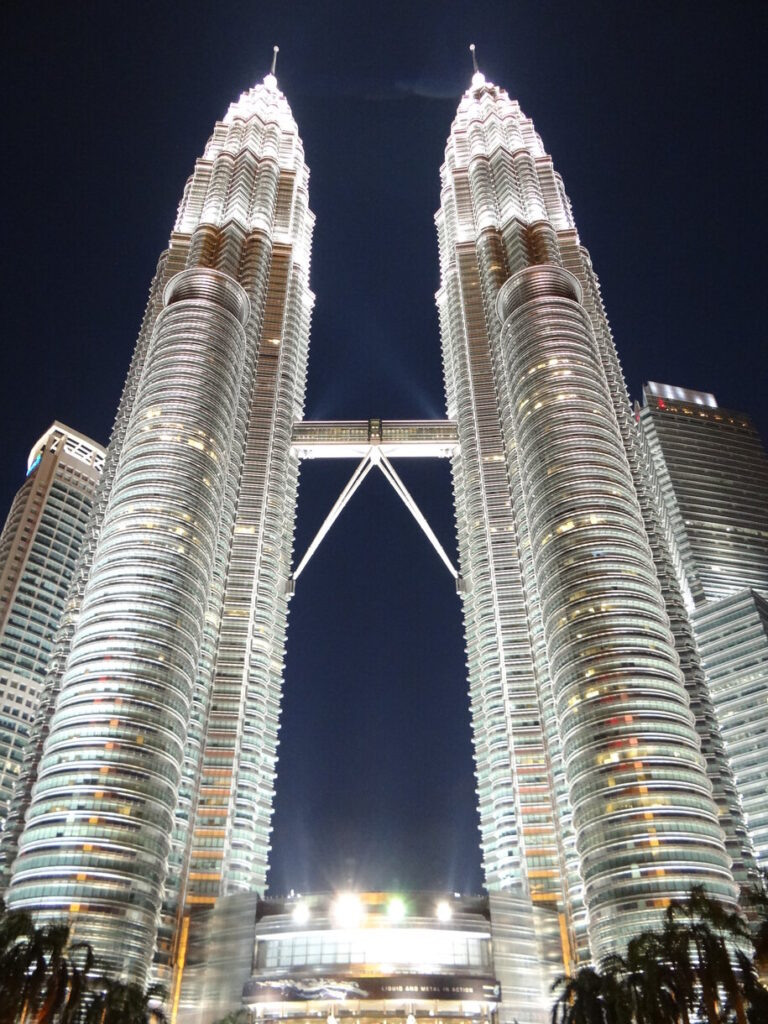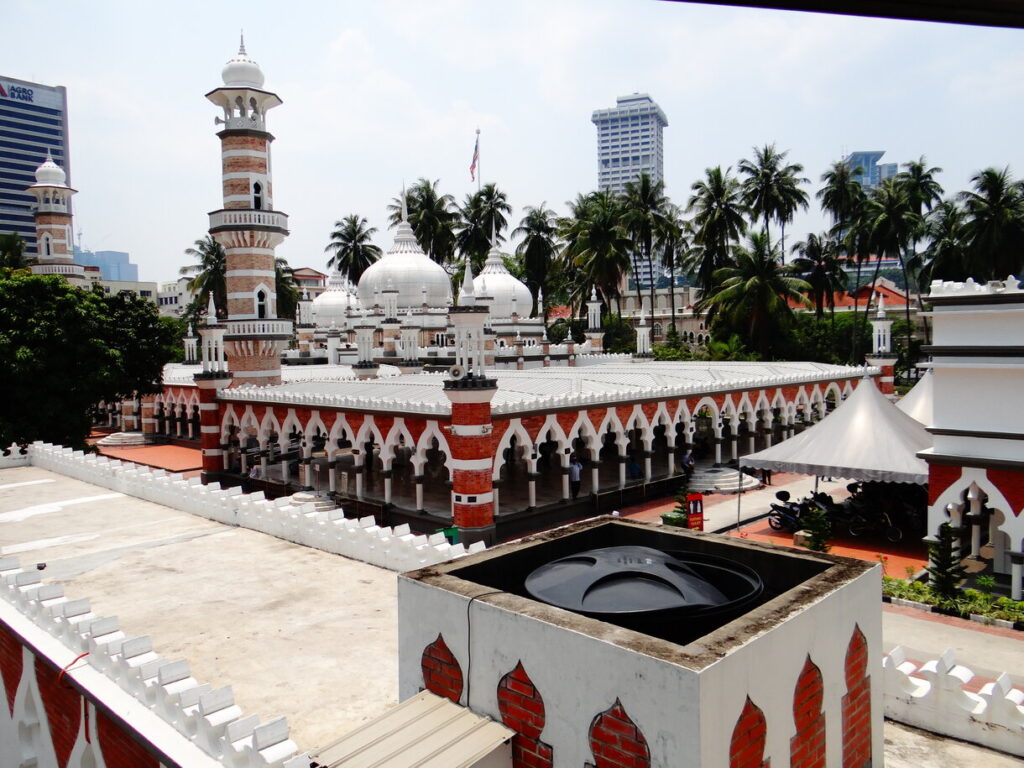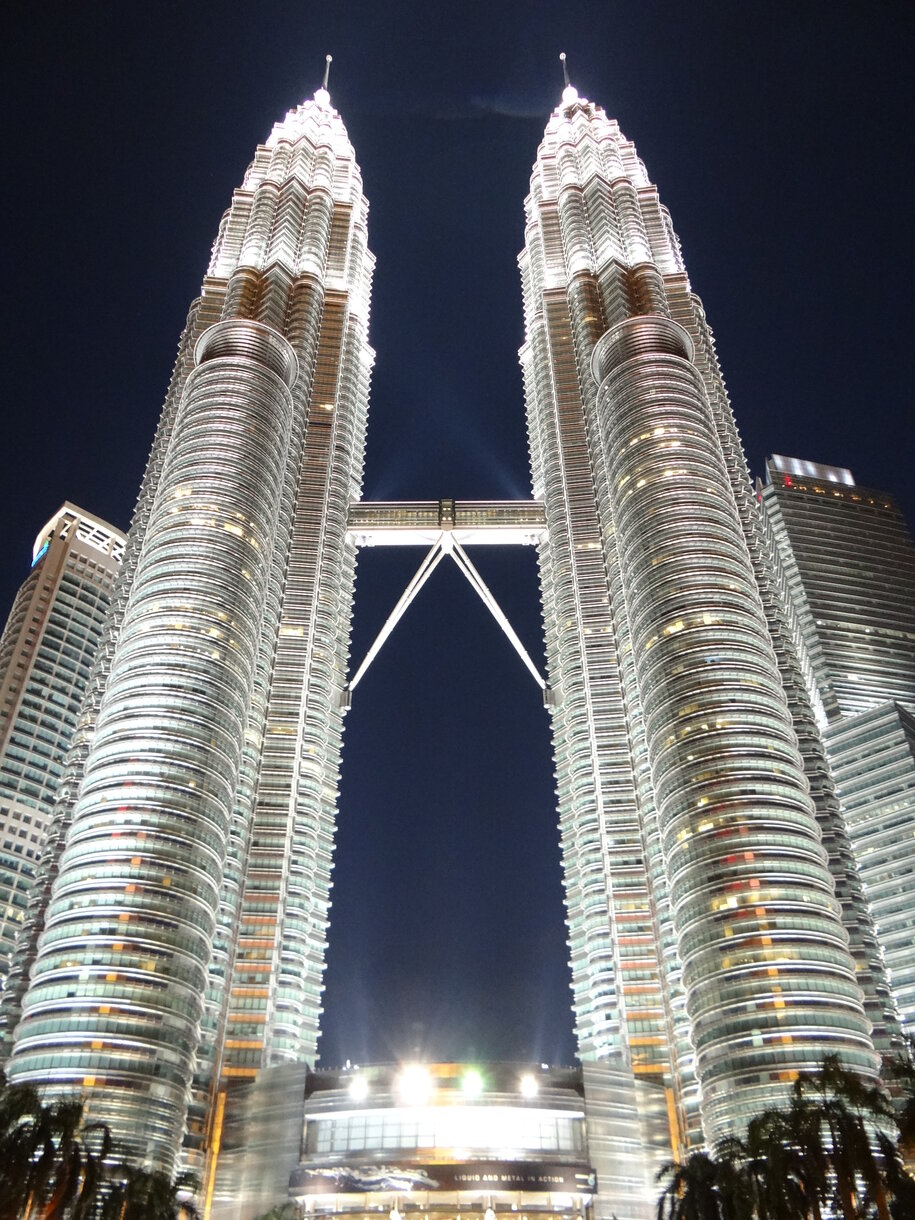Kuala Lumpur – A City of Contrasts and Cultural Mosaic
Arriving in Kuala Lumpur on the eve of the Chinese New Year – one of the most important celebrations for Malaysia’s largest ethnic minority – is an unforgettable experience. Finding accommodation in Chinatown during this festive period is quite a challenge, as many Malaysians take advantage of the holidays to travel around the country. After several attempts, we managed to secure a decent room with a bathroom for 70 RM, proving that while advance booking isn’t strictly necessary in Kuala Lumpur, it can be risky during peak seasons.
The History of Kuala Lumpur – From Swamps to Metropolis

Kuala Lumpur is a city with a relatively short history, founded only in the latter half of the 19th century when Chinese tin miners settled at the confluence of the Klang and Gombak rivers, in an area previously covered by dense, mosquito-infested jungle. The settlement quickly evolved into a trading post and then a city, which flourished under British colonial rule. A key figure was Yap Ah Loy, a Chinese captain who established order, supervised the clearing of the jungle, and oversaw the construction of sturdy brick and stone buildings, giving Kuala Lumpur its distinctive South Chinese architectural character.
By the end of the 19th century, Kuala Lumpur became the capital of the Federated Malay States. The city was divided into districts inhabited by different ethnic groups: the Chinese centered around Chinatown and the commercial district, Malays and Indians lived in other areas, while the British settled near what is now Merdeka Square. The city survived the Japanese occupation during World War II and later became the hub for Malaysia’s preparations for independence, which was achieved in 1963.

In 1969, serious ethnic riots broke out between Malays and Chinese, known as the May 13 Incident, which transformed the country’s policies and led to economic reforms aimed at reducing Chinese dominance in the economy. Today, Kuala Lumpur is a modern metropolis where history blends seamlessly with dynamic development.
Culture and Society – A Mosaic of Nations and Challenges
Kuala Lumpur is a true melting pot of cultures, languages, and religions. Malays, Chinese, Indians, and other ethnic groups coexist in the city, creating a rich social mosaic. While ethnic segregation is not very visible in the city center, different groups have their designated neighborhoods beyond it. Authorities are actively working to reduce social inequalities and promote integration, yet challenges remain, especially regarding urban planning and access to public spaces.
The city is also a hub for numerous protests and gatherings, often held in spaces like KLCC Park, where the iconic Petronas Twin Towers symbolically underscore Kuala Lumpur’s role as the heart of Malaysia. Despite dense urban development and infrastructure challenges, Kuala Lumpur remains a symbol of unity and harmony among diverse communities.
Exploring Kuala Lumpur – Must-See Attractions
Thean Hou Temple
Perched picturesquely on Robson Hill, the Thean Hou Temple is a successful blend of modern architecture and traditional Chinese style. The best way to get there is by taking the monorail (line 8) to Tun Sambanthan station, then crossing a footbridge over a busy street and walking uphill for about 15 minutes.

Petronas Towers – A Symbol of Modernity
The Petronas Towers are the most recognizable buildings in Kuala Lumpur and were the tallest twin towers in the world for several years. They look especially spectacular at night when illuminated. Visiting costs about 80 RM and includes a lift ride to the 41st floor and a walk across the glass skybridge connecting the two towers. From the 360-meter-high observation deck, you can enjoy an impressive city panorama. It’s best to buy tickets early in the morning or online on the official website to avoid disappointment.
Menara Kuala Lumpur – An Alternative with an Open Terrace
Menara Kuala Lumpur is a TV tower offering another fantastic vantage point to admire the city skyline along with the Petronas Towers. Tickets are available for two levels: a cheaper enclosed viewing deck and a more expensive open deck (99 RM), which is better for photography. If you have to choose just one attraction, the open deck at Menara KL is, in my opinion, the superior option.

Fun Facts about Kuala Lumpur
- The name Kuala Lumpur means “muddy confluence,” referring to the meeting point of two rivers.
- The city hosted the Commonwealth Games in 1998 – the first time the event was held in Asia.
- The Petronas Towers were the tallest twin buildings in the world from 1998 to 2004.
- Kuala Lumpur is one of the most multicultural cities globally, where Malays, Chinese, and Indians live side by side.

Leave a Reply